Mar 3, 2020 | Current Events, Elections, Gender, National, Policy, Race, Social Policy
Post developed by Katherine Pearson
A panel of prominent political scientists presented their research at the panel “One Hundred Years of Women Voting: The Nineteenth Amendment’s Legacy and Current Implications” on Monday, February 24, 2020. The experts discussed the political behavior of women leading up to and since the passage of the Nineteenth Amendment to the U.S. Constitution, which granted women the right to vote. Jenna Bednar, professor of political science at the University of Michigan and research faculty at the Center for Political Studies, moderated the discussion. The event was part of the U-M Department of Political Science Rubin Speaker Series and U-M Suffrage 2020 event series.
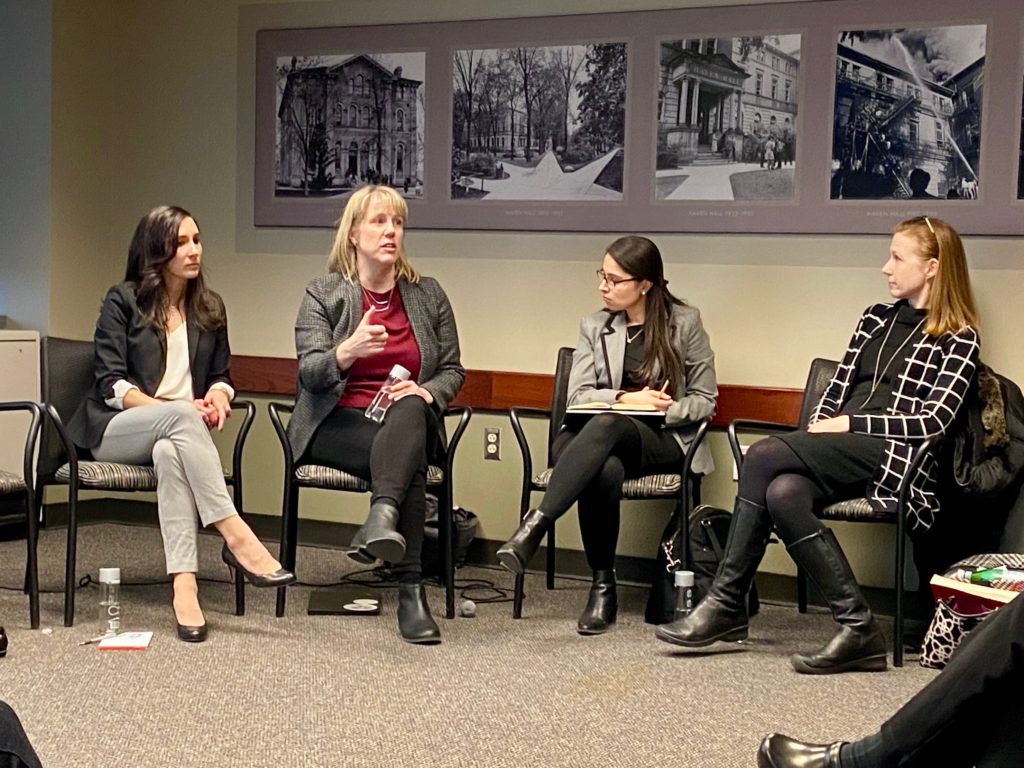
Mara Ostfeld, Christina Wolbrecht, Angela Ocampo, and Corrine McConnaughy
Popular views of women voters over the past 100 years, and what the evidence actually tells us about them
In her newly-released book, A Century of Votes for Women: American Elections Since Suffrage, Christina Wolbrecht, professor of political science at the University of Notre Dame, presents evidence to challenge some of the long-standing beliefs about the way women vote and engage in politics.
In the first several decades of women’s suffrage in the U.S., understanding of women’s political behavior was based on rhetoric, not based on data, said Wolbrecht. Data does show that married women often voted as their husbands did. Political experts interpreted this correlation as evidence of political disinterest on the part of women, but this conclusion was not based on data. Following the belief that women didn’t form independent political opinions, Gallup used quota controlled sampling that undersampled women. The American Voter describes women as following their husband’s wishes rather than voting according to their own beliefs.
Wolbrecht argues that these unsupported conclusions still matter today because these books are still read today. She emphasizes that although married women often vote as their husbands do, we don’t know who is influencing whom.
Political Pioneers: Women of Color as Candidates and Elected Officials
Angela X. Ocampo, a research fellow in the department of political science and the Center for Political Studies, presented current research assessing the representation of women of color as political candidates and elected officials. “Women don’t get access to vote until their racial group does,” said Ocampo, noting that women of color were still denied the right to vote or hold elected office on the basis of race after the passage of the Nineteenth Amendment.
Most research on women of color in elected office focuses on the federal level, but Ocampo, along with her research collaborator, Ana Oaxaca, is studying representation in local government. Their research shows that women are most likely to be elected from places that are protected by the Voting Rights Act. Following the Supreme Court’s decision in Shelby County v. Holder, which significantly weakened the Voting Rights Act, Ocampo sought to understand how the representation of women of color was affected at the local level.
To answer this, she’s analyzing data on city councils in the 300 largest U.S. cities to isolate the factors that are associated with a high proportion of women of color council members. Women of color are underrepresented in city councils, making up only 10% of council members. Ocampo finds that the more Democratic a locality is, the higher the proportion of women of color and minority council members. Proxies of political power are also important. When there is a higher proportion of more minority voters in a city, the proportion of women of color and minority council members also increases.
Ocampo concludes that gains have been made in representation, but parity is yet to be achieved. Representation of women of color and minorities depends on political pressures and the voting power of minority voters. She cautions that upward trends in the representation of women of color and minorities will likely be derailed by efforts to suppress minority votes.
Hidden Politics: Women’s Organizing and the Shape of American Democracy
Corrine McConnaughy is an Associate Professor of Political Science at George Washington University. She earned her Ph.D. at the University of Michigan and worked closely with many of the faculty during that time.
McConnaughy said that to find examples of women doing political work in the period before suffrage, we must look beyond formal suffrage organizations. Whether political organizing was taking place within suffrage organizations or other organizations, historians find common themes in women’s political activity in the period before the nineteenth amendment. Women were doing crucial service work in their communities and creating innovative ways to gain power. Importantly, women were doing political work as women, but not unified by womanhood.
The suffrage movement faced challenges because women were not seen as a promising voting bloc, McConnaughy said. Because so many people believed women would vote as their husbands did, no party stood to gain an advantage by allowing women to vote. For this reason, bi-partisan support was essential to gaining franchise. The ability to form coalitions with other groups also proved essential. Suffragists were well-organized and good at raising money, which made them attractive coalition partners.
Why Women Oppose Policies that Support Women
The final speaker was Mara Ostfeld, is a Faculty Associate with the Center for Political Studies and an Assistant Professor in the Department of Political Science. She presented research she is conducting with two graduate students, Lauren Hahn and Sara Morell.
Ostfeld framed their question: “In the 100 years that women have had access to voting rights, and in the context of women constituting the majority of voters in America, why hasn’t there been more progress for policies to provide women with equitable opportunities?” She cited statistics to illustrate the issue: 20% of women say that reports of the gender pay gap are overblown; one-third of women say that women who complain about sexual harassment create more problems than they solve; another third believe that at least half of the time that women demand equality, they’re actually seeking special favors.
Family socialization is the key reason for these beliefs, according to Ostfeld. “Unlike other marginalized groups, women are not raised in women-majority environments,” she noted.
Ostfeld, Morell, and Hahn conducted a survey to gauge how women believe their family members would react to taking pro-women positions, to assess how women perceive the social costs of their beliefs within their families. The survey also asked about the polices the women supported. Ostfeld found clear evidence that women who believed they will be stigmatized for embracing policies to promote gender equality are far less likely to support those policies. Even among women respondents who recognized the gendered disparities motivating the policies, they were still less likely to support policies promoting gender equality if they felt their family members would stigmatize them for doing so.
Dec 17, 2018 | ANES, APSA, Elections, Gender, International, National, Policy, Race
Post developed by Katherine Pearson
Since its establishment in 2013, a total of 146 posts have appeared on the Center for Political Studies (CPS) Blog. As we approach the new year, we look back at 2018’s most-viewed recent posts. Listed below are the recent posts that you found most interesting on the blog this year.

Crime in Sweden: What the Data Tell Us
By Christopher Fariss and Kristine Eck (2017)
Debate persists inside and outside of Sweden regarding the relationship between immigrants and crime in Sweden. But what can the data actually tell us? Shouldn’t it be able to identify the pattern between the number of crimes committed in Sweden and the proportion of those crimes committed by immigrants? The answer is complicated by the manner in which the information about crime is collected and catalogued. This is not just an issue for Sweden but any country interested in providing security to its citizens. Ultimately though, there is no information that supports the claim that Sweden is experiencing an “epidemic.”
Read the full post here.
 Exploring the Tone of the 2016 Campaign
Exploring the Tone of the 2016 Campaign
By undergraduate students Megan Bayagich, Laura Cohen, Lauren Farfel, Andrew Krowitz, Emily Kuchman, Sarah Lindenberg, Natalie Sochacki, and Hannah Suh, and their professor Stuart Soroka, all from the University of Michigan. (2017)
The 2016 election campaign seems to many to have been one of the most negative campaigns in recent history. The authors explore negativity in the campaign – focused on debate transcripts and Facebook-distributed news content – and share their observations.
Read the full post here.
 Attitudes Toward Gender Roles Shape Support for Family Leave Policies
Attitudes Toward Gender Roles Shape Support for Family Leave Policies
By Solmaz Spence (2017)
In almost half of two-parent households in the United States, both parents work full-time. Yet when a baby is born, it is still new moms who take the most time off work. On average, new mothers take 11 weeks off work while new dads take just one week, according to a 2016 survey carried out by the Pew Research Center. In part, that is because many new fathers in the U.S. don’t have access to paid paternity leave. Paid maternity leave is rare, too: in fact, the U.S. is the only developed nation that does not provide a national paid family leave program to new parents.
Read the full post here.
 The Spread of Mass Surveillance, 1995 to Present
The Spread of Mass Surveillance, 1995 to Present
By Nadiya Kostyuk and Muzammil M. Hussain (2017)
By closely investigating all known cases of state-backed cross-sector surveillance collaborations, the authors’ findings demonstrate that the deployment of mass surveillance systems by states has been globally increasing throughout the last twenty years. More importantly, from 2006-2010 to present, states have uniformly doubled their surveillance investments compared with the previous decade.
Read the full post here.
 Redrawing the Map: How Jowei Chen is Measuring Partisan Gerrymandering
Redrawing the Map: How Jowei Chen is Measuring Partisan Gerrymandering
By Solmaz Spence (2018)
“Gerrymandering”— when legislative maps are drawn to the advantage of one party over the other during redistricting—received its name in 1812, when Massachusetts Governor Elbridge Gerry signed off on a misshapen district that was said to resemble a salamander, which a newspaper dubbed a “gerrymander.”
But although the idea of gerrymandering has been around for a while, proving that a state’s legislature has deliberately skewed district lines to benefit one political party remains challenging.
Read the full post here.
 Inside the American Electorate: The 2016 ANES Time Series Study
Inside the American Electorate: The 2016 ANES Time Series Study
By Catherine Allen-West, Megan Bayagich, and Ted Brader (2017)
Since 1948, the ANES- a collaborative project between the University of Michigan and Stanford University- has conducted benchmark election surveys on voting, public opinion, and political participation. To learn more about the study, we asked Ted Brader (University of Michigan professor of political science and one of the project’s principal investigators) a few questions about the anticipated release.
Read the full post here.
 Understanding the Changing American Electorate
Understanding the Changing American Electorate
By Catherine Allen-West (2018)
The American National Election Studies (ANES) has surveyed American citizens before and after every presidential election since 1948. The survey provides the public with a rigorous, non-partisan scientific basis for studying change over time in American politics.
The interactive graphs in this post illustrate the changing American electorate and some of the factors that may motivate voters’ choices at the ballot box.
Read the full post here.
 Using Twitter to Observe Election Incidents in the United States
Using Twitter to Observe Election Incidents in the United States
By Catherine Allen-West (2017)
Election forensics is the field devoted to using statistical methods to determine whether the results of an election accurately reflect the intentions of the electors. Problems in elections that are not due to fraud may stem from legal or administrative decisions. Some examples of concerns that may distort turnout or vote choice data are long wait times, crowded polling place conditions, bad ballot design and location of polling stations relative to population.
Read the full post here.
 Inequality is Always in the Room: Language and Power in Deliberative Democracy
Inequality is Always in the Room: Language and Power in Deliberative Democracy
By Catherine Allen-West (2017)
In a paper presented at the 2017 APSA meeting, Arthur Lupia, University of Michigan, and Anne Norton, University of Pennsylvania, explore the effectiveness of deliberative democracy by examining the foundational communicative acts that take place during deliberation.
Read the full post here.
 Making Education Work for the Poor: The Potential of Children’s Savings Accounts
Making Education Work for the Poor: The Potential of Children’s Savings Accounts
By Katherine Pearson (2018)
Dr. William Elliott contends that we need a revolution in the way we finance college education. His new book Making Education Work for the Poor, written with Melinda Lewis, takes a hard look at the inequalities in access to education, and how these inequalities are threatening the American dream. Elliott and Lewis present data and analyses outlining problems plaguing the system of student loans, while also proposing children’s savings accounts as a robust solution to rising college costs, skyrocketing debt burdens, and growing wealth inequality. In a presentation at the University of Michigan on October 3, 2018, Elliott presented new research supporting the case for children’s savings accounts and rewards card programs.
Read the full post here.
Dec 21, 2017 | ANES, Current Events, Elections, Foreign Affairs, Gender, International, Michigan, Social Policy, Student Experiences
post developed by Catherine Allen-West
Since its establishment in 2013, a total of 137 posts have appeared on the Center for Political Studies (CPS) Blog. As we approach the new year, we look back at 2017’s most-viewed posts. Listed below are the posts that you, our dear readers, found most interesting on the blog this year.
What makes a political issue a moral issue? by Katie Brown and Timothy Ryan (2014)
 There are political issues and then there are moral political issues. Often cited examples of the latter include abortion and same sex marriage. But what makes a political issue moral?An extensive literature already asserts a moral vs. not moral issue distinction. Yet, there is no consensus in how to distinguish between moral and non-moral political issues. Further, trying to sort issues into these categories proves challenging.
There are political issues and then there are moral political issues. Often cited examples of the latter include abortion and same sex marriage. But what makes a political issue moral?An extensive literature already asserts a moral vs. not moral issue distinction. Yet, there is no consensus in how to distinguish between moral and non-moral political issues. Further, trying to sort issues into these categories proves challenging.
The Spread of Mass Surveillance, 1995 to Present by Nadiya Kostyuk and Muzammil M. Hussain (2017)
 By closely investigating all known cases of state-backed cross-sector surveillance collaborations, our findings demonstrate that the deployment of mass surveillance systems by states has been globally increasing throughout the last twenty years. More importantly, from 2006-2010 to present, states have uniformly doubled their surveillance investments compared with the previous decade.
By closely investigating all known cases of state-backed cross-sector surveillance collaborations, our findings demonstrate that the deployment of mass surveillance systems by states has been globally increasing throughout the last twenty years. More importantly, from 2006-2010 to present, states have uniformly doubled their surveillance investments compared with the previous decade.
Why do Black Americans overwhelmingly vote Democrat? by Vincent Hutchings, Hakeem Jefferson and Katie Brown (2014)
In 2012, Barack Obama received 93% of the African American vote but just 39% of the White vote. This 55% disparity is bigger than vote gaps by education level (4%), gender (10%), age (16%), income (16%), and religion (28%). And this wasn’t about just the 2012 or 2008 elections, notable for the first appearance of a major ticket African American candidate, Barack Obama. Democratic candidates typically receive 85-95% of the Black vote in the United States. Why the near unanimity among Black voters?
Measuring Political Polarization by Katie Brown and Shanto Iyengar (2014)
Both parties moving toward ideological poles has resulted in policy gridlock (see: government shutdown, debt ceiling negotiations). But does this polarization extend to the public in general? To answer this question, Iyengar measured individual resentment with both explicit and implicit measures.
Is policy driven by the rich, or does government respond to all? by Catherine Allen-West (2016)
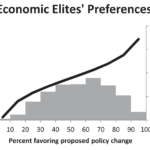 The enthusiasm for both Trump and Sanders’ messages about the influence of money in politics brings up an important question: Is policy driven by the rich, or does government respond to all? Political scientists have long been interested in identifying to what degree wealth drives policy, but not all agree on it’s impact.
The enthusiasm for both Trump and Sanders’ messages about the influence of money in politics brings up an important question: Is policy driven by the rich, or does government respond to all? Political scientists have long been interested in identifying to what degree wealth drives policy, but not all agree on it’s impact.
Exploring the Tone of the 2016 Election by U-M undergraduate students Megan Bayagich, Laura Cohen, Lauren Farfel, Andrew Krowitz, Emily Kuchman, Sarah Lindenberg, Natalie Sochacki, and Hannah Suh, and their professor Stuart Soroka (2017)
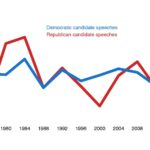 Political economists often theorize about relationships between politics and macroeconomics in the developing world; specifically, which political or social structures promote economic growth, or wealth, or economic openness, and conversely, how those economic outcomes affect politics. Answering these questions often requires some reference to macroeconomic statistics. However, recent work has questioned these data’s accuracy and objectivity. An under-explored aspect of these data’s limitations is their instability over time.
Political economists often theorize about relationships between politics and macroeconomics in the developing world; specifically, which political or social structures promote economic growth, or wealth, or economic openness, and conversely, how those economic outcomes affect politics. Answering these questions often requires some reference to macroeconomic statistics. However, recent work has questioned these data’s accuracy and objectivity. An under-explored aspect of these data’s limitations is their instability over time.
Crime in Sweden: What the Data Tell Us by Christopher Fariss and Kristine Eck (2017)
In a recent piece in the Washington Post, we addressed some common misconceptions about what the Swedish crime data can and cannot tell us. However, questions about the data persist. These questions are varied but are related to two core issues: (1) what kind of data policy makers need to inform their decisions and (2) what claims can be supported by the existing data.
Moral conviction stymies political compromise by Katie Brown and Timothy Ryan (2014)
 Ryan’s overarching hypothesis boils non-compromise down to morals: a moral mindset orients citizens to oppose political compromises and punish compromising politicians. There are all kinds of issues for which some citizens seem resistant to compromises: tax reform, same-sex marriage, collective bargaining, etc. But who is resistant? Ryan shows that part of the answer has to do with who sees these issues through a moral lens.
Ryan’s overarching hypothesis boils non-compromise down to morals: a moral mindset orients citizens to oppose political compromises and punish compromising politicians. There are all kinds of issues for which some citizens seem resistant to compromises: tax reform, same-sex marriage, collective bargaining, etc. But who is resistant? Ryan shows that part of the answer has to do with who sees these issues through a moral lens.
Does the order of names on a ballot affect vote choice? by Katie Brown and Josh Pasek (2013)
 Ballots list all candidates officially running for a given office so that voters can easily choose between them. But could the ordering of candidate names on a ballot change some voters’ choices?
Ballots list all candidates officially running for a given office so that voters can easily choose between them. But could the ordering of candidate names on a ballot change some voters’ choices?
Inside the American Electorate: The 2016 ANES Time Series Study by Catherine Allen-West, Megan Bayagich and Ted Brader (2017)
Since 1948, the ANES- a collaborative project between the University of Michigan and Stanford University- has conducted benchmark election surveys on voting, public opinion, and political participation. This year’s polarizing election warranted especially interesting responses.
Oct 30, 2017 | APSA, Gender, Social Policy
Post written by Solmaz Spence
In almost half of two-parent households in the United States, both parents work full-time. Yet when a baby is born, it is still new moms who take the most time off work. On average, new mothers take 11 weeks off work while new dads take just one week, according to a 2016 survey carried out by the Pew Research Center.
In part, that is because many new fathers in the U.S. don’t have access to paid paternity leave. Paid maternity leave is rare, too: in fact, the U.S. is the only developed nation that does not provide a national paid family leave program to new parents.
Only three states (California, New Jersey, and Rhode Island) have their own paid parental leave policies, as do some companies. In Silicon Valley, tech giants like Facebook, Google and Twitter offer gender-neutral paid parental leave policies that can be taken by new moms, dads, and adoptive parents. But that’s not the norm. According to the Society for Human Resource Management’s 2016 Employee Benefits research report, only 18 percent of U.S. organizations offer paid maternity leave, 12 percent provide paid paternity leave, and 17 percent have a paid parental leave plan that can be taken by either parent.
More commonly, birth moms with short-term disability insurance receive some pay for six to eight weeks following childbirth. If new moms want to take more time, or if dads, adoptive parents, or moms who didn’t give birth themselves want time off to bond with a new baby, those eligible under the Family and Medical Leave Act can take unpaid leave for up to 12 weeks.
But even if new fathers had access to parental leave programs, they might not take advantage of them. A survey by Deloitte found that 36 percent of men would not take advantage of their paid parental leave benefits because they worried it might jeopardize their position at work. And parental leave programs that offer more benefits to moms than to dads only reinforce the stereotype of the female caregiver and male breadwinner.
How is support for parental leave policies structured by attitudes about traditional gender roles? To assess this relationship, a team of researchers including Stuart Soroka, faculty associate at the University of Michigan’s Center for Political Studies, along with Allison Harell, Shanto Iyengar and Valérie Lapointe, surveyed 3600 people across Canada, the United States, and the United Kingdom. The results of the survey* were recently published as a chapter in the book, Mothers and Others: The Role of Parenthood in Politics.
The authors came to the study with mixed expectations for how gender role ideologies would influence support for parental leave. On the one hand, because parental leave programs give working mothers time at home after the birth of a child, they can help new moms balance work and motherhood—a struggle that is at the heart of traditional gender role ideology.
On the other hand, women must be employed to access maternity leave benefits, and the central goal of these policies is for women to return to their careers—facts that could conflict with conservative gender role attitudes.
Expanding parental leave to new fathers also has the potential to make men more involved in childcare, women more engaged in their careers, and workplaces friendlier for parents of all kinds. Thus, those holding more traditional views might be less supportive of parental leave policies that can be applied to male recipients.
This study assessed gender role ideology by asking participants how strongly they agreed or disagreed with four statements related to women’s roles in the home and as mothers:
- A woman’s place is in the home, not in the office or shop.
- A mother who carries out her full family responsibilities doesn’t have time for outside employment.
- The employment of mothers leads to more juvenile delinquency.
- Women are much happier if they stay at home and take care of their children.
In general, respondents rejected the view that a woman’s employment is detrimental to her perceived duty at home—but there were clear variations in responses. Largely in line with expectations, demographic factors such as being female, having a university education, and being employed were associated with more liberal views; those who are married, have children, and are older had more conservative views.
Next, the researchers investigated whether citizens are more or less generous toward parental leave takers based upon their gender role attitudes as well as the gender stereotypicality of the leave takers.
The researchers presented survey participants with fictional stories that described the situation of several potential parental leave takers: a married female, a single female, a married male, a single male. In each case, respondents were told the amount of leave to which the new parent is entitled in their country, and were asked how much he or she thinks the recipient should receive in monetary benefits.
Across all respondents, there was strong support for more stereotypical leave takers, with respondents opting to give the female parents in the fictional situations about $175 more in benefits than the male parents. The marital status of the leave taker was also important, with married leave takers receiving about $70 more than single parents—despite the fact that one might assume that single parents would be more in need of state support. There thus was a general tendency to enforce gender norms in terms of who benefits from family leave policies.
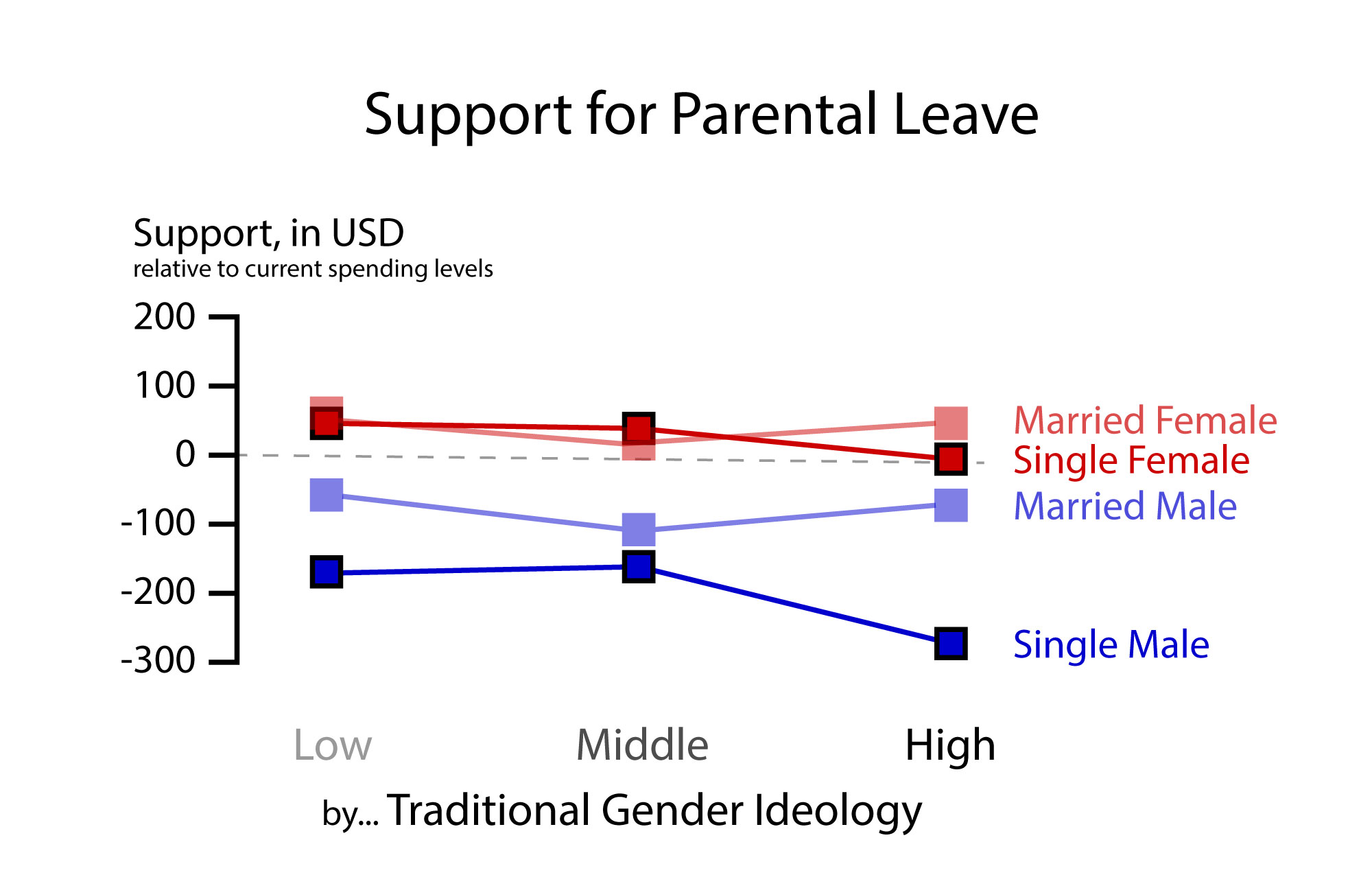
This figure shows the relationship between gender role attitudes (plotted on the x axis), and cash support for parental leave policy (show on the y-axis). Across all respondents in the U.S., UK and Canada, support is strongest for more stereotypical leave takers (married females), and least generous for single men.
That said, the researchers found that those who hold more conservative gender role attitudes in the UK and U.S. tended to be less generous toward leave takers overall. Among US survey participants in particular, those with the most conservative gender role attitudes reported giving the fictional recipients about $124 less than respondents who held more progressive attitudes. This was after controlling for the characteristics of the fictional leave takers, and also for the ideological orientation of the respondent with respect to government benefits.
Moreover, those with more traditional gender norms tended to be particularly punitive to non-stereotypical leave takers. (This is clear in the figure above.) The most conservative respondents reported giving single male recipients about $330 less than they would give to married women leave takers. In contrast, for respondents with more progressive gender role ideology, the difference in benefits between married women and single men was about $230.
These results highlight a good deal of complexity in the structure of support for parental leave policy. It is not necessarily the case that women are more supportive of parental leave policy than men, for instance. Although women are more likely to reject traditional gender roles, women who are married with children tend to believe more strongly in the gendered division of parenthood, and thus, are less willing to extend parental leave benefits to men. In the U.S., and also Canada and the UK, support for parental leave policy reflects a set of complex and often counteracting ideas about gender, parenting, and work.
*Race, Gender, and the Welfare State survey (RGWS)
Dec 21, 2016 | Current Events, Elections, Foreign Affairs, Gender, Innovative Methodology, Law, Race
Post written by Catherine Allen-West.
Since it’s establishment in 2013, a total of 123 posts have appeared on the Center for Political Studies (CPS) Blog. As we approach the new year, we thought to take a look back at which of these 123 posts were most viewed across 2016.
01. Tracking the Themes of the 2016 Election by Lisa Singh, Stuart Soroka, Michael Traugott and Frank Newport (from the Election Dynamics blog)
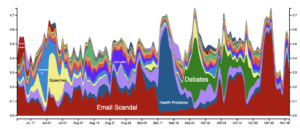 “The results highlight a central aspect of the 2016 campaign: information about Trump has varied in theme, almost weekly, over the campaign – from Russia, to taxes, to women’s issues, etc; information about Clinton has in contrast been focused almost entirely on a single theme, email.”
“The results highlight a central aspect of the 2016 campaign: information about Trump has varied in theme, almost weekly, over the campaign – from Russia, to taxes, to women’s issues, etc; information about Clinton has in contrast been focused almost entirely on a single theme, email.”
02. Another Reason Clinton Lost Michigan: Trump Was Listed First on the Ballot by Josh Pasek
 “If Rick Snyder weren’t the Governor of Michigan, Donald Trump would probably have 16 fewer electoral votes. I say this not because I think Governor Snyder did anything improper, but because Michigan law provides a small electoral benefit to the Governor’s party in all statewide elections; candidates from that party are listed first on the ballot.”
“If Rick Snyder weren’t the Governor of Michigan, Donald Trump would probably have 16 fewer electoral votes. I say this not because I think Governor Snyder did anything improper, but because Michigan law provides a small electoral benefit to the Governor’s party in all statewide elections; candidates from that party are listed first on the ballot.”
03. Motivated Reasoning in the Perceived Credibility of Public Opinion Polls by Catherine Allen-West and Ozan Kuru

“Our results showed that people frequently discredit polls that they disagree with. Moreover, in line with motivated reasoning theories, those who are more politically sophisticated actually discredit the polls more. That is, as political knowledge increases, the credibility drops substantially for those who disagree with the poll result.”
04. Why do Black Americans overwhelmingly vote Democrat? by Vincent Hutchings, Hakeem Jefferson, and Katie Brown, published in 2014.
“Democratic candidates typically receive 85-95% of the Black vote in the United States. Why the near unanimity among Black voters?”
05. Measuring Political Polarization by Katie Brown and Shanto Iyengar, published in 2014.
 “Both parties moving toward ideological poles has resulted in policy gridlock (see: government shutdown, debt ceiling negotiations). But does this polarization extend to the public in general?”
“Both parties moving toward ideological poles has resulted in policy gridlock (see: government shutdown, debt ceiling negotiations). But does this polarization extend to the public in general?”
06. What makes a political issue a moral issue? by Katie Brown and Timothy Ryan, published in 2014.
“There are political issues and then there are moral political issues. Often cited examples of the latter include abortion and same sex marriage. But what makes a political issue moral?”
07. Moral Conviction Stymies Political Compromise, by Katie Brown and Timothy Ryan, published in 2014.
Ryan’s overarching hypothesis boils non-compromise down to morals: a moral mindset orients citizens to oppose political compromises and punish compromising politicians. There are all kinds of issues for which some citizens seem resistant to compromises: tax reform, same-sex marriage, collective bargaining, etc. But who is resistant? Ryan shows that part of the answer has to do with who sees these issues through a moral lens.
08. Exploring the Effects of Skin Tone on Policy Preferences Among African Americans by Lauren Guggenheim and Vincent Hutchings, published in 2014.
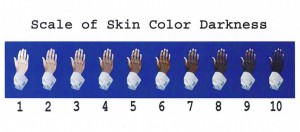 In the United States, African Americans with darker skin tones have worse health outcomes, lower income, and face higher levels of discrimination in the work place and criminal justice system than lighter skinned Blacks. Could darker and lighter skinned African Americans in turn have different policy preferences that reflect their socio economic status-based outcomes and experiences?
In the United States, African Americans with darker skin tones have worse health outcomes, lower income, and face higher levels of discrimination in the work place and criminal justice system than lighter skinned Blacks. Could darker and lighter skinned African Americans in turn have different policy preferences that reflect their socio economic status-based outcomes and experiences?
09. What We Know About Race and the Gender Gap in the 2016 U.S. Election by Catherine Allen-West
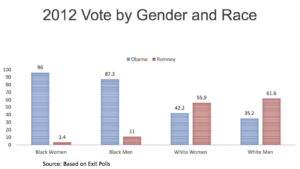 As of October, the latest national polls, predicted that the 2016 Election results will reflect the largest gender gap in vote choice in modern U.S. history. If these polls had proven true, the 2016 results would indicate a much larger gender gap than what was observed in 2012, where women overwhelmingly supported Barack Obama over Mitt Romney. University of Texas at Austin Professor Tasha Philpot argues that what really may be driving this gap to even greater depths, is race.
As of October, the latest national polls, predicted that the 2016 Election results will reflect the largest gender gap in vote choice in modern U.S. history. If these polls had proven true, the 2016 results would indicate a much larger gender gap than what was observed in 2012, where women overwhelmingly supported Barack Obama over Mitt Romney. University of Texas at Austin Professor Tasha Philpot argues that what really may be driving this gap to even greater depths, is race.
10. How do the American people feel about gun control? by Katie Brown and Darrell Donakowski, published in 2014.
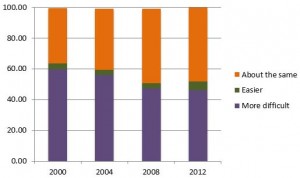 As we can see, the proportion of the public supporting tougher regulation is shrinking over the time period, while satisfaction with current regulations increased. Yet, support for tougher gun laws is the most popular choice in all included years. It is important to note that these data were collected before Aurora, Newtown, and the Navy Yard shootings. The 2016 ANES study will no doubt add more insight into this contentious, important issue.
As we can see, the proportion of the public supporting tougher regulation is shrinking over the time period, while satisfaction with current regulations increased. Yet, support for tougher gun laws is the most popular choice in all included years. It is important to note that these data were collected before Aurora, Newtown, and the Navy Yard shootings. The 2016 ANES study will no doubt add more insight into this contentious, important issue.
Nov 29, 2016 | APSA, Elections, Gender
This post was created by Catherine Allen-West, Nahomi Ichino and Noah Nathan.
Political parties across the developed and developing world increasingly rely on some form of primary to select nominees for legislative elections. The candidate selection process within political parties is crucial for shaping the extent to which voters can control elected representatives, as parties are important intermediaries between citizens and government.
The scientific literature has only scratched the surface in examining how primary elections operate in new democracies and what the implications of the system may be, both for the quality of candidates presented to the electorate and for general election outcomes. The process for selecting a candidate varies on several dimensions, including the restrictiveness of the rules for who may seek a nomination and who selects nominees.
In a new paper entitled, Democratizing the Party: The Effects of Primary Election Reforms in Ghana, Nahomi Ichino and Noah Nathan, collaborators in the Center for Political Studies at the University of Michigan, investigated the impact of recent reforms within one of the two major parties in Ghana that significantly expanded the size of the primary electorate.
Ghana has held regular, concurrent elections for president and a unicameral parliament since its transition to democracy in 1992. The two parties that dominate elections in Ghana’s parliament are the National Democratic Congress (NDC), the current ruling party, and the New Patriotic Party (NPP), the current opposition. The two parties pursue similar policy, but they differ in their ethnic bases of support. Voting is not exclusively along ethnic lines, but, in Ghana, ethnicity remains a strong determinant of vote choice overall.
One reason that Ichino and Nathan looked at primaries in a new democracy is that patronage is prevalent in these settings. The primaries are a contest over who becomes the more important local patron in a given constituency rather than a contest over policy issues and ideology. In these scenarios, voting in primaries can involve extensive vote buying through the distribution of private goods. In Ghana, aspirants (politicians seeking their party’s nomination) woo voters with gifts of flat screen TVs, new motorbikes, payment of school fees for their children and more. This system inherently benefits aspirants with immense personal wealth and the political connections to distribute these goods to the right people. It also disadvantages aspirants who are outsiders who may better represent the interests of the party membership, like women or people from different ethnic groups.
So, given Ghana’s recent reforms that expanded the size of the electorate, Ichino and Nathan argue that this expansion will have positive effects on democratic representation through two changes:
- Vote buying becomes more difficult both logistically and financially due to the sheer size of new electorate.
- The expanded primary electorate will include new voters from groups that have been underrepresented in local party leadership positions.
These changes in turn will affect what types of politicians choose to compete in primary elections and the types of politicians who win nominations. In particular, the researchers hypothesize that more female politicians and politicians from groups that are usually excluded from power will compete for nominations and that nominees will be more likely to come from these marginalized groups. Ultimately, a larger pool of people- representing a more diverse distribution of preferences and interests- has a viable path to a nomination, and thus to elected office.
Their results show just that: With the new reforms, the total number of aspirants increased (including women and other ethnic groups) and more of these aspirants went on to become the party nominee. Also interesting to note: the number of aspirants with a private sector background (which indicates more personal wealth to put towards vote buying) decreased significantly.

This figure shows the effects of reforms on the number of aspirants (total, women aspirants only, and then aspirants from different sets of ethnic groups).
Overall, the reforms increased the probability that the nominee will be from a non-plurality (local minority) ethnic group by 18 percentage points on average and reduced the probability that the nominee will be from the party’s core ethnic coalition by 12 percentage points on average.

This figure shows the effects of reforms on the characteristics of the selected nominee (whether that was the incumbent, someone who was a government official, etc.)
The results suggest that, in Ghana, the reforms opened up important positions in the party to previously under-represented groups. This work is important because it advances our understanding of the nature and effects of primary elections in new democracies, contributes to research on institutional reforms that can improve the political incorporation of women, and also shows how internal political dynamics within parties shape the connections between parties and ethnic groups in setting where ethnic competition is prevalent.



 Exploring the Tone of the 2016 Campaign
Exploring the Tone of the 2016 Campaign Attitudes Toward Gender Roles Shape Support for Family Leave Policies
Attitudes Toward Gender Roles Shape Support for Family Leave Policies




 Inequality is Always in the Room: Language and Power in Deliberative Democracy
Inequality is Always in the Room: Language and Power in Deliberative Democracy 
















